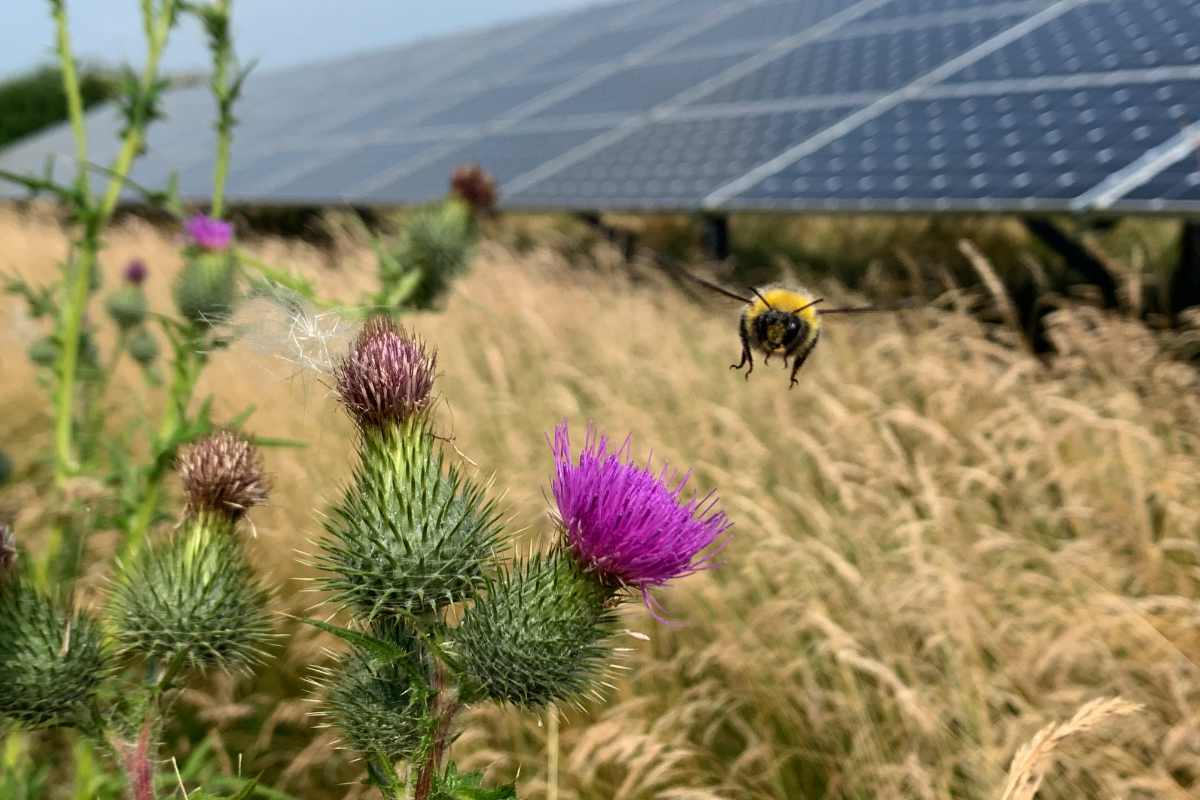
On the road to renewable energy, solar parks may provide another important benefit: for nature.
In order to achieve the objectives of the Paris Climate Agreement, we must look for new ways to generate energy. The Netherlands mainly focuses on solar and wind energy. Worldwide, solar energy is even the most chosen way to generate sustainable electricity. Huge solar parks are being built in many places for this purpose. But this ground will certainly not be lost, according to researchers. Well-designed solar parks can make an important contribution to today’s weakened biodiversity.
Solar parks
A solar park is a piece of land with solar panels that generate sustainable energy. Often a number of hectares of land are used for a solar park, on which tens of thousands of solar panels appear. But this does not mean that valuable land is ‘lost’ at the same time. “Solar parks can occupy large tracts of land,” researcher Hollie Blaydes told Scientias.nl. “And although some of this is taken up by solar panels, it often only covers five percent of the surface. This means that large tracts of land within a solar park can be used for other purposes.”
Biodiversity
In a new study, the researchers have shown that relatively simple adjustments in the management of solar farms can help today’s weakened biodiversity. “Well-designed solar farms can lead to an increase in the number of bumblebees and other pollinators,” Blaydes says. And that is very beneficial for nature. Bumblebees contribute to biodiversity through pollination and thus to a better ecological balance. “Bumblebees are also very important for the conservation of wild plants,” Blaydes continues. “In addition, bumblebees are important pollinators for agriculture and contribute to our food security. They provide a host of useful services to human society.”
From grass to flower meadows
However, according to the researchers, it is important that solar panels placed underneath create space for flower meadows. It means that grass should give way to a variety of flowers. Because they attract much more bumblebees and other pollinators than grass. “In fact, we predict more than four times as many bumblebees foraging in solar farms set in flower meadows,” Blaydes said.
Conservation
The findings show that solar parks can therefore have a double function. Not only are they a way to generate clean energy, they also provide benefits for nature. “We have now provided the first quantitative evidence that solar farms can act as a means of biodiversity conservation,” Blaydes said. “If properly set up, they can provide valuable habitat for bumblebees. Moreover, solar parks are usually safe places with a lifespan of 25 to 40 years. This means that there is sufficient time for the formation of new ecosystems.”
Agriculture
Moreover, such solar parks can also benefit surrounding agricultural land, says Blaydes. In their study, the researchers discovered that large, elongated solar parks rich in flowers also ensure that more bumblebees fly around 1 kilometer outside the parks. And that can be beneficial for nearby crops. “For example, farmers living near a solar farm could choose to plant more crops that rely on insect pollination,” Blaydes suggests.
Solution
With their study, the researchers show how solar parks, which are sometimes controversial, can contribute to the solution to the current environmental crisis. “Solar will dominate the future global electricity supply,” Blaydes says. “Our study now suggests that solar farms can be beneficial for bumblebees, if properly managed. It is an important environmental gain that can be included in the energy transition.”
This does not alter the fact that any changes in the landscape, such as the emergence of solar parks, may have consequences. “This means that it is crucial that we investigate the possible consequences of building solar farms,” says Blaydes. “So we will have to map the consequences for both humans and the environments in which they appear.”
Source material:
“Solar parks could boost bumble bee numbers in a win-win for nature” – British Ecological Society
Interview with Hollie Blaydes
Image at the top of this article: Hollie Blaydes